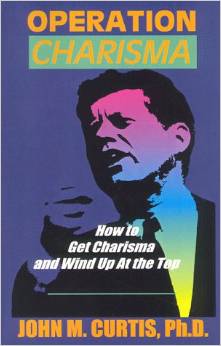Forgetting the dog days of the Bush administration in 2008 when the economy shed about 200,000 jobs a month, real estate mogul and former reality TV start Donald Trump proved he could blow smoke with the best of them. Calling President Barack Obama’s economy a “disaster,” the Labor Department reported August payrolls jumped by a 173,000, bringing the nation’s unemployment rate down to 5.1%. Unemployment dropped from 9.8% shortly after Obama took office to Friday, Sept. 14 rate of 5.1%, prompting 68-year-old Federal Reserve Board Chairman Janet Yellen to consider hiking the federal funds rate from its record low of zero-to-a-quarter-percent. Former Fed Chairman Ben Bernanke dropped the rate to a record low Feb. 15, 2008 to prevent the economy from sliding into a second Great Depression. Trump forgets the dark days of 2008 when U.S. banks ran out of cash.
Unlike political campaigns, Federal Reserve Board, Labor and Commerce Department stats don’t lie about the economy to win votes. “I never thought it was going to be this bad . . . It’s a complete disaster,” said Trump Aug. 24, talking fast-and-loose about the U.S. economy. As former GOP nominee Mitt Romney found out in 2012, you can’t make up stuff about the economy. Saying it’s a “disaster,” doesn’t make it so. Voters don’t rely on politicians to get the facts, they look at recognized metrics like the Federal Reserve, Labor and Commerce Departments. “The country is in serious trouble,” Trump insisted, not comparing it to the Great Recession Obama inherited from Bush in 2009. Even with today’s long-awaited market sell-off, dropping the Dow Jones Industrial Average from its May 19 record high of 18,312 to Friday’s close 16,102, the Dow is still up nearly 300%.
When the Dow bottomed March 5, 2009 at 6,443, the nation had lost nearly 10 million jobs or 5 trillion in market capitalization. With Beranke’s help, Obama cut the nation’s soaring federal budget deficit from $1.4 trillion when he took office to under 450 billion, on its way to a balanced budget as the nation’s Gross Domestic Product continues to grow. According to the Labor Department, wage growth only grew by 2.2%, reflecting the drag on U.S. GDP growth. “The job market is still moving in the right direction,” said Robyn Anderson, senior economist at Des Moines, Iowa-based Principal Global Investors, refuting Trump’s “disaster” description. Trump promises to add more private sector jobs, the exact opposite of what the economy needs to expand U.S. GDP growth. Columbia University Business School’s Nobel Prize-winning economist Joseph Stiglitz said the economy needs more federal jobs.
Fed Chairwoman Janet Yellen must decide Sept. 15-16 at the Feds’ Open Market Committee Meeting whether or not to raise interest rates. Sluggish wage growth indicates that the bulk of the U.S. working population doesn’t have enough disposable income to increase GDP growth. International Monetary Fund Managing Director Christine Legarde asked Yellen Sept. 6 to hold off on a rate hike because of a protracted European and Chinese economic slowdown. Legarde sees higher U.S. interest rates squeezing the global economy, especially if Wall Street continues to melt down. Trump and other GOP candidates likes to blame Obamacare for costing the government too much money. Adding some 56,000 health care jobs in August proves that Obamacare greatly expanded the health care job marketplace, adding thousands on new health care-related jobs.
Repeating the same mistake again, the GOP continues to rip Obama’s economy, despite glaring government metrics that say the opposite. Calling the Obama economy a “disaster” proves that Trump blows smoke like other politicians. Blaming Obama for a failed Mideast peace strategy is one thing but, given the widely published government data, it makes zero sense to rip the economy. Voters know the difference between published facts and political rhetoric. However the August jobs report gets revised upward, it’s going to be difficult for Yellen to ignore the international community and raise interest rates at its September FOMC meeting. “August always gets revised up,” said Tom Gimbel, CEO of La Salle Network, a recruiting firm. “The economy is in a very neutral place. It’s not falling down and no jumping up,” disputing Trump’s idea that the economy’s currently a “disaster.”
Politicians can’t deviate too far from the facts before they’re accused of playing fast-and-loose. Most voters with common sense know the economy’s doing a lot better than it was under the past Bush administration. As Yellen weighs a rate hike, she needs to consider effect of ending the third round of quantitative easting Oct. 14, 2014. Withdrawing $85 billion a month from the U.S. economy, Yellen hoped rock-bottom interest rates would be enough stimulus to spur more U.S. GDP growth. With more part-time workers and low-wage jobs, unemployment remains low without boosting more GDP growth. Before Yellen pulls the trigger on interest rates, she’ll have to convince herself and the FOMC that a growing economy has changed the Feds’ deflationary bias to one of high growth. Without more federal jobs, it’s difficult stimulate U.S. GDP growth.



